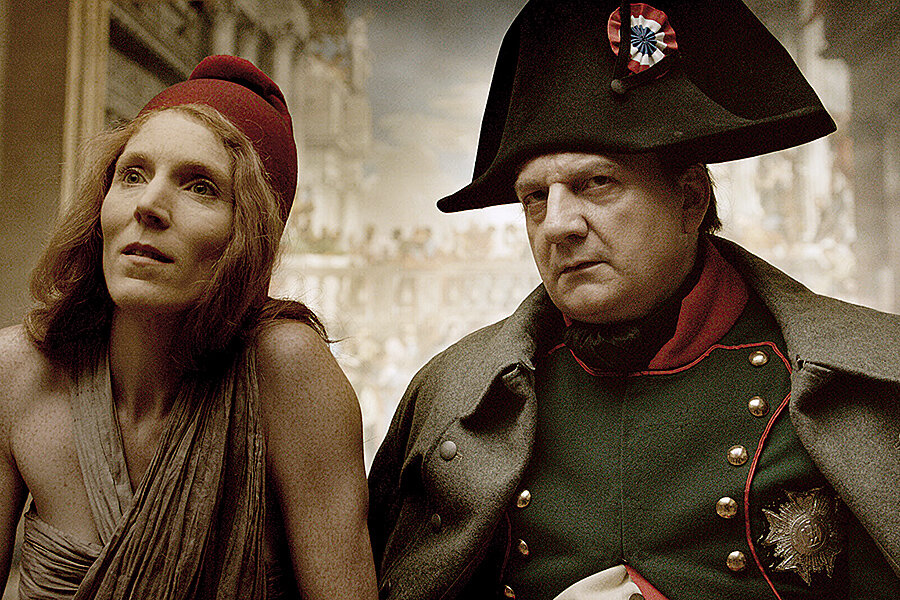'Francofonia' is occasionally juvenile but has a sinuous grace
Loading...
In 2002, Russian director Alexander Sokurov made “Russian Ark,” a one-of-a-kind movie shot in St. Petersburg’s Hermitage Museum and filmed in a single unbroken take. Now it’s the Louvre’s turn. “Francofonia,” while not shot continuously, has a sinuous grace that recalls that earlier film.
Part documentary, part reverie, “Francofonia” is about the Louvre during the German occupation in World War II, starting in the summer of 1940. We see clips of the German Army marching into Paris, with Hitler surveying the Eiffel Tower and the Champs-Élysées en route to the Louvre – the jewel in the Nazi crown. Sokurov interlaces these newsreels with scenes of himself at his editing console, as his voice, querying and meditative, supplies a murmurous recitation of musings.
His chief subject here is how great art becomes the spoils of war. The Germans intended to plunder the Louvre, just as conquerors in all wars from time immemorial have done with the art of defeated nations. Sokurov stages scenes inside the Louvre of Napoleon striding through the galleries announcing “C’est moi” every time he confronts his visage in a portrait. It’s a clunky conceit, but then, at just the right moment, Sokurov has the emperor announce, “I went to war for art,” and it has the resonance of a manifesto.
When Sokurov (who had full access to filming inside the Louvre) shows us Assyrian sculptures and friezes, the point is made without any underlining that the plunder of ancient artifacts in the Middle East (think Syria and Islamic State) is only the latest in a litany of such outrages.
The historical reenactments in “Francofonia” primarily involve the relationship between Jacques Jaujard (Louis-Do de Lencquesaing), the Louvre’s director, who stayed on, unlike so many other French civil servants, when the Germans showed up, and Count Franziskus Wolff-Metternich (Benjamin Utzerath), whom Hitler trusted to supervise the dismantling of the art collection.
Jaujard was prepared for the invasion. The museum’s most renowned works had already been transferred to châteaux located out of bombing range. (Wolff-Metternich had done as much in Germany with its own art treasures.) As a result, the Louvre that Wolff-Metternich inspects is essentially emptied out.
What unites the two men is a love of art, not as a victor’s spoils but as the cultural hallmark – the heart and soul – of a nation. Wolff-Metternich, in fact, did much to keep Hitler away from the Louvre’s trove and risked opprobrium for his subterfuges.
It’s often debated whether, in times of war, the rescuing of art should be discussed in the same breath with the rescuing of people, and Sokurov does not enter into that debate. But his love for great art is inextricably bound up with his love for the people who have created it, and for the legacy that art bestows on future generations. When he shows us the “Mona Lisa” or “The Winged Victory of Samothrace,” or a 9,000-year-old statue of a man, his presentations need no political justification.
Sokurov is a playful philosopher. If his playfulness is sometimes juvenile – as in those Napoleon scenes, or, worse, in the scenes of an actress playing Marianne, the spirit of France, exhorting, “Freedom, Equality, Brotherhood” – at least he’s not stuffy. His little capers loosen up the proceedings and make his underlying seriousness more inviting. A philosopher with a sense of humor is a rarity. At one point, he says to us on the soundtrack, “You aren’t tired of listening to me yet?” For me, the answer was always, no. Grade: B+ (This film is not rated.)







